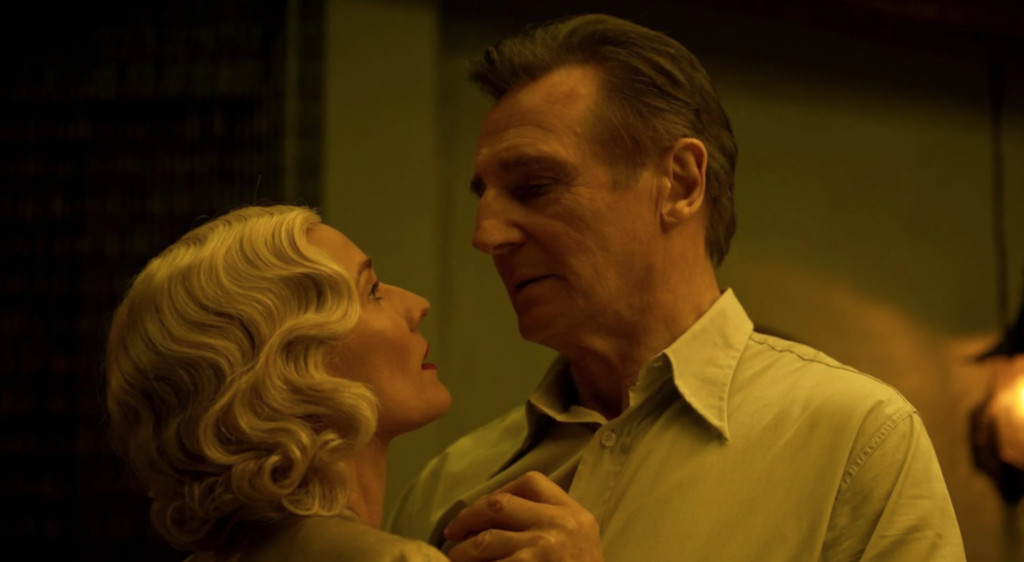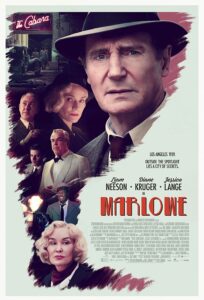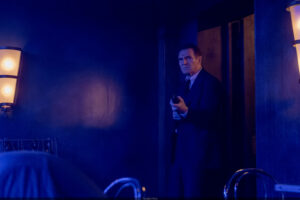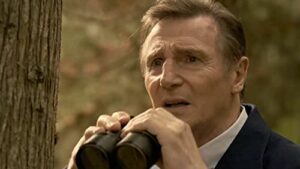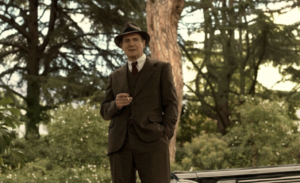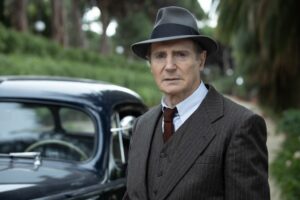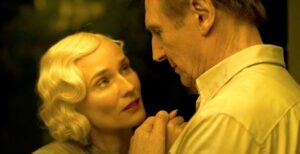Directed by Neil Jordan | Written by William Monahan, based on the novel by John Banville and the character created by Raymond Chandler | 110 min | ▲▲△△△
What we have here is a breathless effort to do a straight-ahead 1930s Hollywood private eye thriller, and a movie deeply indebted to the 1970s classic Chinatown — and willing to nod to it in the scenery, make-up, and the casting — as it is to the book its on, one of the ones not written by Chandler. Unlike Chinatown, which oozed a certain Nixon-era disillusionment and American despair, this one doesn’t feel like it’s about anything at all. It’s just a competent fake, a slavish pastiche, a movie that makes some of the right moves but would’ve been a lot better off if it played those noirish cliches for a laugh rather than taking itself so seriously.
The screenplay — from the writer of much better movies including The Departed, The Gambler and London Boulevard — carries all the weight of a 1980s TV potboiler except instead of being wrapped up in 50-or-so minutes, this one takes an extra hour to find an ending that it never convinces you to care about.
Liam Neeson is the grizzled gumshoe, Phillip Marlowe, wandering around a Los Angeles filled with first generation Irish-Americans — you can understand how the Irish filmmaker Jordan would be interested in that part of this tale. More the shame it doesn’t really amount to much but background colour.
Within 15 minutes I was lost in the movie’s labyrinthine plot. It has something to do with a low-level gunsel, Nico (François Arnaud), getting his ass run over outside a swanky local club. Marlowe is paid by Nico’s married lover, Clare Cavendish (Diane Kruger), to find out what happened. It turns out the body identified as Nico might not have been him, but if not, where is he… and who’s the dead man? What does Nico’s sister have to do with it, or his employer?
The real question is: Who really cares? This is all so academic, so resolutely plot driven, we’re never engaged by what’s going on — it’s all just an exercise in style.
There are things to recommend in the style, though. The sets and locations — partly shot in Spain — convincingly recreate the architecture that would’ve been much more common in the swankier parts of Los Angeles in the 1930s.
We also get the pleasure of quality character actors showing up in key roles — Jessica Lange, Colm Meany, Adewale Akinnuoye-Agbaje, and Alan Cumming, with Danny Houston here as a nod to the role his father, John, played in Chinatown. One of the small pleasures this picture has to offer is watching these thesps chew through the wordy, affected dialogue.
Consider that in Rob Roy Lange was Neeson’s love interest, and here he’s paired with Kruger who plays Lange’s daughter. At least the movie has the self-respect to have the characters mention the age difference two or three times — Lange herself calls Neeson on it. If she sounds especially bitter in how she delivers that line, it’s easy to understand why.
The real mystery here is how the director of deeply involving thrillers like Mona Lisa, The Crying Game, and The Good Thief could assemble a Frankenstein monster of a movie that’s got the right brains and bones but a body disconnected from any real emotion.





